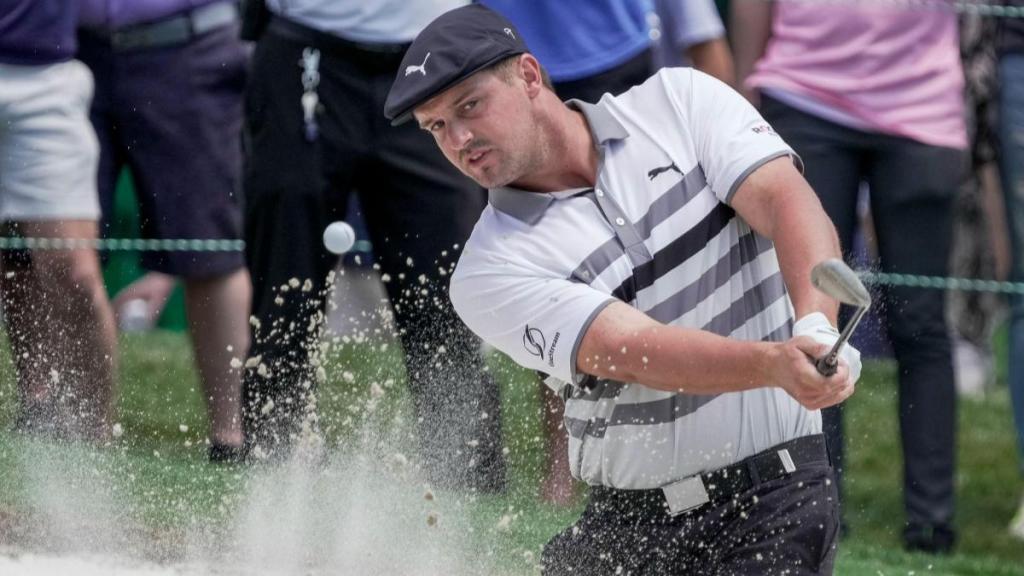Drive for show and putt for dough. And what a show Bryson DeChambeau put on at the 2024 Masters Tournament! The burly American finished tied sixth for a career-best outing at Augusta. The highlights weren’t just DeChambeau’s trademark mighty heaves with the driver but his scintillating performance with the flat stick. If anything, it was the latter that really made an impression on golf fans. There’s a dark magic to golf that longball junkies forget. This golf swing has always been an unholy marriage of violence and grace, and you can’t build a scorecard on just one of those things.
At the top of his backswing, poised to unleash his downswing, DeChambeau reminded me a bit of Uwe Hohn, the East German javelin powerhouse. At the Games in Berlin, 1984, Hohn hurled the javelin, and the world gasped. Think of the power, the biomechanics, the sheer danger of that thing soaring through the air like an angry hornet just over 100 metres. They changed the sport after that: made the javelins less lethal and curtailed how far they could fly. A similar thing is happening in golf. Just not for safety but rather, as those who’re calling the shots like to see it, to save the soul of the game. And they’re doing it by restricting it by how far the golf ball will be able to fly.
The R&A, golf’s old guard in those stuffy blazers, keeps a tight lid on things: length of shafts, number of dimples on the ball — there’s a reason they micromanage the hardware. We want a level field, of course. But it’s deeper than that. See, golf’s always been about walking a razor’s edge. Power, yes, gives you a leg up. But you need touch around those greens, that Seve-like wizardry, to scramble, to plot a bogey from the deepest rough. But young players aren’t interested in being wiry magicians like Ballesteros anymore. Not surprisingly, equipment companies have cashed in: wedges like machetes and drivers that turned a mishit into a missile. It was only a matter of time before weekend warriors like us got caught up in the arms race.
Look, I’m not one of those purists whining about the good old days. I love my forgiving driver heads as much as the next hacker. But the pros? Their game looks different now. Bomb and gouge — that’s the strategy. 350 off the tee, wedge onto the dance floor, yawn. Where’s the artistry in that? Where’s the thinking man’s desperation that made this game so fascinating?
All of this has had pretty damaging (and expensive) repercussions on golf course architecture. Classic gems have had to get stretched out, bunkers repositioned, all to keep up with the absurd lengths these pros are hitting. It’s like trying to contain a raging river by building higher dams — sooner or later, something breaks. The charm of the old layouts, the emphasis on shot-making and strategic choices, slowly fades in favour of brute force and bravado.
Old-timers, guys who played with persimmon woods and balata balls, swear there’s an art that’s being lost. That the modern game is too clinical, too, reliant on brute force and the latest tech toys. And maybe they’ve got a point. There’s a joy in the struggle, in learning to shape a shot with the equipment you’ve got, making magic with what seems like limitations. That, right there, is the key difference — limitations.
Golf has always been a game bound by constraints. The course itself, with slyly concealed bunkers and deceptively sloped greens, dictates your choices. The rules, with their meticulous penalties, force both strategy and discipline. And even our bodies, frustratingly human and prone to hiccups, present a constant challenge. Technology keeps trying to break those chains, to give us more power, more forgiveness, to smooth over the rough edges.
But isn’t there a danger in that? Doesn’t part of the allure of golf lie in the fact that it can never be truly mastered? That even the greatest players have days when nothing goes right when the ball stubbornly refuses to obey? The constant struggle against the elements, against the course, against our own flawed selves…that’s what keeps us coming back for more. It’s the promise that maybe, just maybe, tomorrow, the stars will align, and we’l play that one round that justifies all the frustration and expense.
There’s this photo I keep coming back to. Seve Ballesteros, in the rough, contorted like a circus performer, playing a shot from what looks like an impossible lie. On his face, pure defiance. I imagine him thinking, “Alright, world, try and stop me.” That’s not power. It’s guts, it’s desperation, and it’s far more compelling to watch than the calculated perfection of some modern fairway robot.
Of course, none of this will stop me from secretly admiring the effortless bombs my playing partners unleash. And hey, maybe I’ll even splurge on one of these low-spin, drivers that everyone is hitting 300 yards these days. The truth is, like so many of us out there, I’ll never practise my short game enough to get good at it. This means the joy of a well-struck chip that dances up to the pin will always be a rare thing. And that, my friends, is where true magic lies.


